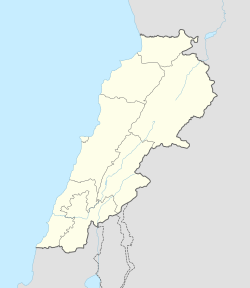It has been suggested that this article be merged into Hashem Safieddine . ( Discuss ) Proposed since November 2025. |
| Assassination of Hashem Safieddine | |
|---|---|
| Part of the 2024 Israeli invasion of Lebanon and the Israel–Hezbollah war (2023–present) | |
| Type | Airstrike |
| Location | Dahieh, Lebanon 33°51′5″N35°30′14″E / 33.85139°N 35.50389°E |
| Target | Hashem Safieddine |
| Date | 3 October 2024 |
| Executed by | |
| Casualties | 26 Hezbollah officials killed, including Safieddine (per IDF) |
On the night of 3 October 2024, the Israel Defense Forces (IDF) carried out an airstrike on an underground bunker in Dahieh, a predominantly Shia Muslim suburb in the south of Beirut, Lebanon, where Hezbollah leaders, including Hashem Safieddine, had convened in the headquarters of Hezbollah's Intelligence Branch. [1] [2] Safieddine was later confirmed dead by both the IDF and Hezbollah. [3] [4]
Contents

